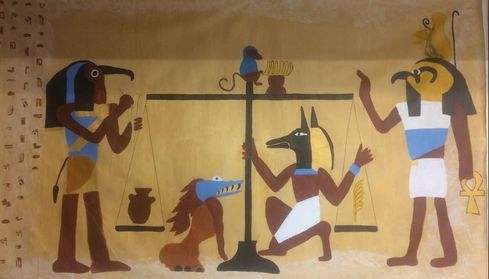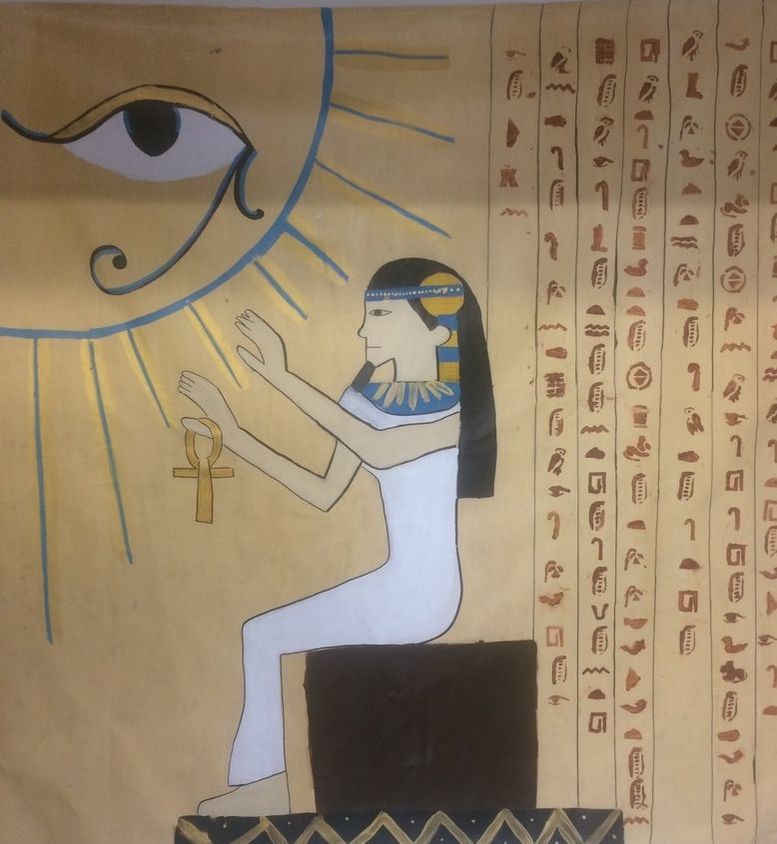Ancient egypt
|
How is power expressed in the different aspects of a culture?
Enduring Understandings:
During this unit you need to complete the following work:
|
Culminating Project
Join a research team that will build a three dimensional model of an ancient Egyptian tomb (sarcophagus, mummy, funerary). Write an artist's statement explaining how power is expressed in your piece. Assessment: Your grade will depend on the quality of your notebook (30%), tasks and projects (30%), discussion participation (20%), quizzes (10%), and your work habits (10%)
All work is due before the end of the unit. Do not wait to turn work in. As you finish a task give it to me for feedback and grading.
|
 Made by 2016/2017 7th Grade Class
Made by 2016/2017 7th Grade Class
Ancient Egypt was a civilization of Northeastern Africa, concentrated along the lower parts of the Nile River in what is now the modern country of Egypt. Egyptian civilization started around 3150 BC under the first pharaoh. The history of ancient Egypt occurred in a series of stable Kingdoms: the Old Kingdom, the Middle Kingdom and the New Kingdom.
The success of ancient Egyptian civilization came partly from its ability to adapt to the conditions of the Nile River Valley. The predictable flooding and controlled irrigation of the fertile valley produced surplus crops, which supported its social and cultural development.
The success of ancient Egyptian civilization came partly from its ability to adapt to the conditions of the Nile River Valley. The predictable flooding and controlled irrigation of the fertile valley produced surplus crops, which supported its social and cultural development.
The many achievements of the ancient Egyptians include the building of pyramids, temples, and obelisks; a system of mathematics, an effective system of medicine, irrigation systems and agricultural production techniques, the first known ships, new forms of literature, and the earliest known peace treaty with Hittites. Egypt left a lasting legacy. Its art and architecture were widely copied, and its antiquities carried off to far corners of the world. Its monumental ruins have inspired the imaginations of travelers and writers for centuries.
Click here for an interactive view of the Pyramids from NOVA.
Click here to visit a great site from the BBC about the Egyptian gods.
Click here for an interactive view of the Pyramids from NOVA.
Click here to visit a great site from the BBC about the Egyptian gods.


